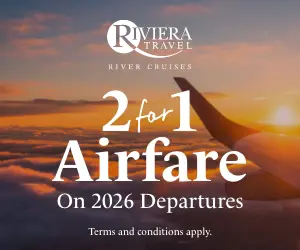Ground Transport Spending an Overlooked Opportunity for TMCs
by Fred GebhartThis is the second in a series on managing secondary spend. Part One looked at managing dining expenditures.
Managing spending on ground transportation — like managing dining spend — is an often-overlooked opportunity for travel managers to save their companies money.
“This is a high-impact category that is not being managed very well, if it is being managed at all,” according to Omayra Cruz, director of client services for GroundLink.
Cruz discussed ground transportation expenditures — part of so-called “secondary spend” — at a recent Association of Corporate Travel Executives (ACTE) webinar.
Ignored category
In a recent ACTE survey, 47% of travel manager respondents said they had no idea how much they are spending on ground transportation .
Forty-five percent of the travel managers said ground transportation accounts for 6% or more of their total travel spend, which is more than the typical company spends on rental cars.
Black cars for hire
The so-called black car business is highly fragmented and prices vary significantly. Few companies have figured out how to manage this high-expense category. (Black cars are for-hire vehicles that are typically luxury cars or SUVs for business traveler use.)
GroundLink and companies like it help corporations consolidate, track and manage this fragmented and largely-unknown spend, Cruz said.
Roundtrip airport transportation in one of the top 25 metro areas in the country accounts for the highest use of black cars for most companies.
The specific airport, metro area, set of employees and services provided varies from company to company. For most companies, ground transportation ranges from 2% to 4% of total T&E spend.
Most travel managers lack the data to even track their ground transportation spend, much less manage it, according to Cruz.
Pros and cons
About five years ago, it was easier to hail a taxi than it was to arrange private ground transportation. Mobile apps have now made it just as easy to hail a black car as it is a taxi. The change is both good and bad for travel managers.
On the up side, the easier it is to snag a black car means that more travelers are using them and increasing productivity. Booking online is less expensive than booking by phone.
On the down side, the easier it is to hail a black car, the more travelers will upgrade to a limo or an SUV.
“Your spend can grow significantly unless you are managing utilization,” Cruz said.
Companies with relatively limited needs might be able to find a multi-city provider that covers their key destinations. But the larger the company or the broader its geographic reach, the less likely it will be able to find one—or even a reasonable number of—providers to cover key destinations.
Tracking destinations and users
Consolidators like GroundLink can help, said Cruz.
Just as a few key destinations account for the bulk of a company’s black car use, a few key employees account for the bulk of a company’s black car spend. Tracking both destinations and users gives the travel manager a better view of spend and highlights management opportunities.
It’s ancillary fees, not the basic tab, that drives up costs, Cruz explained. Extra stops, additional wait times, cancellations, inside pick-ups and other special services can boost expenditures without adding to the value of the service.
“Educated users are the key to controlling costs,” Cruz said. “Once you bring ground transportation into policy and address issues like SUVs and excessive cancellations, you can make a difference in how much you are spending and the value you are deriving from your spend.
“Once your employees see the value in your management program, they will embrace it and do most of the management for you.”
Related story
See Part One: Biz Travel: Ignoring Dining Spend Is Costing You



















